cities
Being Human in Digital Cities – review
In Being Human in Digital Cities, Myria Georgiou explores how technology reshapes urban life, transforming how we relate to ourselves, each other and the space around us. Examining the digital order’s influence, including datafication, surveillance and mapping, Georgiou’s essential book advocates for centring humans through the paradigm of the “right to the city” based on social justice, equity, democracy and sustainability, writes Samira Allioui.
Being Human in Digital Cities. Myria Georgiou. Polity. 2023.
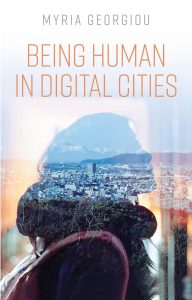 Technology, embodied through so-called smart cities (places where traditional networks and services are made more efficient with the use of digital solutions for the benefit of their inhabitants and business), has been implemented into all aspects of public and private urban life. Recently, the United Nations created the Hub for Human Rights and Digital Technology as a way to encourage cities to strategise around their “right to have digital rights,” stating that: “Together, as we seek to recover from the pandemic, we must learn to better curtail harmful use of digital technology and better unleash its power as a democratising force and an enabler”.
Technology, embodied through so-called smart cities (places where traditional networks and services are made more efficient with the use of digital solutions for the benefit of their inhabitants and business), has been implemented into all aspects of public and private urban life. Recently, the United Nations created the Hub for Human Rights and Digital Technology as a way to encourage cities to strategise around their “right to have digital rights,” stating that: “Together, as we seek to recover from the pandemic, we must learn to better curtail harmful use of digital technology and better unleash its power as a democratising force and an enabler”.
Myria Georgiou’s Being Human in Digital Cities addresses the question, how do digital cities change what it means to be human in relation to digital urbanism and digital justice? It has never been more urgent to understand how the digital order functions and its implications for controlled cities and lives. The city is where so many hopes and fears emerge for the future of humanity, and therefore studying its changing nature in a digitalised world is crucial. Moreover, the relationship between the transformation of cities and the right to the city has not yet been seriously explored.
It has never been more urgent to understand how the digital order functions and its implications for controlled cities and lives.
Intrigued by the growing symbolic power of technology in regulating the city, Georgiou demonstrates how an unstable but tenacious urban order is planned, performed, and sometimes resisted on platforms and networks to sustain the social order in cities that experience perpetual crisis. Georgiou’s principal thesis is that the digital order reflects the revived and contradictory mobilisation of humanist values across different quarters of the city. Human-centric conceptions of technology are at the heart of an emerging digital urban order. According to Georgiou, these values are gaining renewed currency by imagining and planning relationships between humans and data.
The book identifies the rhetorics and performances of the digital order as core elements of processes of change in the relational constitution of cities, technologies, and power (42). The book’s generative force comes from Georgiou’s assertion that a dynamic comeback of humanist values in and for the digital city is underway. Her central argument is that humanism matters when it mobilises (populist humanism), normalises (demotic humanism) and contests (critical humanism) power (143-144). Considering the various implications of being human in digital cities is a critical topic at a time when declarations and manifestos have emerged worldwide claiming to protect citizens’ digital rights. Digital rights are a range of protections regarding access to the internet, privacy, transparency regarding how data is used, control over how data is used and democratic participation in municipal technology decisions. They need to be protected because they represent the bridge that links our traditional human rights with the complexities of the online world, ensuring that our digital identities, decisions, and interactions are treated with the same protection and respect as in the physical world.
[Digital rights] link our traditional human rights with the complexities of the online world, ensuring that our digital identities, decisions, and interactions are treated with the same protection and respect as in the physical world.
The digital order has become a post-neoliberal response to neoliberal crises, and it breaks from the strategies of neoliberalism in different ways (31). It is a new order which “emerges because of widespread pressures to recognize the sacredness of life and the value of society” (30). Through “the promotion of unpredictability, openness and diversity, the digital order integrates instability into stability” (31). The author subtly explains why she privileges the category of the human and consequently rehumanisation-dehumanisation in understanding the digital order. Since technology is more and more infiltrating our consciousness, we become addicted to our devices that distract us and feed us information. But paradoxically, while these changes drive us to retreat to corners of comfort, we try to conquer divisiveness by cultivating communities. A research journey across eight cities of the global North and South – from London to Seoul, and from Los Angeles to Athens – over seven years has shaped Georgiou’s understanding of the digital order. From this grounding, she explains how she adopts a decentred conception of the city which privileges a transnational and transurban vision and practice. Georgiou’s methodological choice of a critical humanist approach promotes an open, creative, and participant-led approach that includes the perspectives of humans.
Georgiou adopts a decentred conception of the city which privileges a transnational and transurban vision and practice.
Her compelling research reveals two paradoxes. First, migrants’ experiences, gathered through interviews conducted with 60 teens in Athens and Los Angeles, present rehumanisation-dehumanisation as a continuum rather than a blunt proposition. Second, the Global South is ever present in cities of the Global North (113). Georgiou’s findings suggest that becoming urban reinforces autonomy. For example, migrants’ everyday experiences, mediated and linked through urban migration and technology, reveal their acute awareness that the development of autonomy protects them from certain kinds of dehumanisation such as exclusion Moreover, during this research conducted in the context of a European project on young people’s digital lives, Georgiou witnessed sentiments of enthusiasm and relief when participants were talking about a commonly used urban technology: Google Maps, including Google Earth and Street View (115). Participants were relieved because “becoming urban is not only about learning but also about being an autonomous subject in navigating city”.
Her work evidences the value of everyday technologies (namely, smartphones and apps) and the concept of “secret city” (117) for those excluded from so many other spaces of representation. A secret city only exists in a sociotechnical imagination. As a place of consumption, it is imaginary in the sense that it remains discovered and consumed through technical devices. In fact, as smart cities begin to become dehumanised realms and behavioural data is neglected, the place of humans risks being devalued. Georgiou’s research is an invaluable attempt to claim and interrogate human experiences in their entanglement with the digital in urban settings.
Georgiou describes predictive policing, the practice of using algorithms to analyse massive amounts of information to predict and help prevent potential crimes as a mundane form of symbolic violence regularly applied in the city (126). This is part of a wider trend of states’ increasing the surveillance of citizens, with surveillance understood as any personal data acquisition for management influence or entitlement. Predictive policing systems have been empirically shown to create feedback loops, where police are frequently sent back to the same neighbourhoods, regardless of the true crime rate. In the US, predictive policing tends to disproportionately target more African Americans, areas with higher concentrations of Latinos and Black, Asian and Minority ethnic (BAME) people.
In response to these trends of profiling and surveillance, the right to the city emerges as a new paradigm that provides an alternative framework with which to rethink cities and human settlements based on the principles of social justice, equity, democracy and sustainability.
In response to these trends of profiling and surveillance, the right to the city emerges as a new paradigm that provides an alternative framework with which to rethink cities and human settlements based on the principles of social justice, equity, democracy and sustainability. According to Georgiou, it presents “a revamped moral vision which points to potentially democratising processes that recognize and address urban injustices” (97). It is worth noting that Georgiou, unlike other authors, prefers to address the concept of the right to the city rather than the “right to a smart city”, her research does not advocate an approach focused on “smart citizens”, “smart citizenship” and “smart cities”. She avoids a citizen-centred approach and instead privileges life, freedom, and wellbeing, expanding her framework to include all humans in urban settings, whether they are citizens or migrants.
Finally, the book, brimming with secondary research, opens new critical avenues into techno-political research on digital cities. More precisely, knowing that humans are less studies as agents involved in the creation of digital, the book sheds light on urban humanity which often remains an opaque category. It highlights humans as agents of change and the displacement of questions of power but also of rights to the city. She investigates essential questions about what it means to be human in digital cities, suggesting that “the most compelling claims to humanism come from those who experience dehumanisation”. Such offerings beg the question of readers, who is and isn’t seen as fully human within city spaces and how does the dawn of the digital city affect those boundaries?
Note: This review gives the views of the author, and not the position of the LSE Review of Books blog, or of the London School of Economics and Political Science.
Image credit: Goldilock Project on Shutterstock.
The Architecture of Disability: Buildings, Cities, and Landscapes beyond Access – review
In The Architecture of Disability: Buildings, Cities, and Landscapes beyond Access, David Gissen contends that the focus on access in design around disability perpetuates inequalities, arguing instead for centralising disabled people in architectural and urban planning. Amy Batley finds that the book’s attempts to reframe disability in contemporary urban landscapes are overpowered by historical tangents and subjective claims.
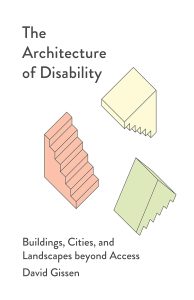 While the gendered and racialised inequalities of urban design have become prominent avenues of academic debate, the limited consideration of the needs of disabled people within planning for the public sphere continues to undermine calls for more egalitarian urban design. In The Architecture of Disability, David Gissen pursues this matter, arguing that the overwhelming focus on access when designing cities continues to perpetuate inequalities for people with disabilities in using urban spaces, landscapes and buildings. For Gissen, the architectural emphasis on access is insufficient. In response to this, he calls for a more critical understanding of how disability is experienced in the urban realm, and for those with disabilities to be centralised in architectural and urban design, rather than exteriorised.
While the gendered and racialised inequalities of urban design have become prominent avenues of academic debate, the limited consideration of the needs of disabled people within planning for the public sphere continues to undermine calls for more egalitarian urban design. In The Architecture of Disability, David Gissen pursues this matter, arguing that the overwhelming focus on access when designing cities continues to perpetuate inequalities for people with disabilities in using urban spaces, landscapes and buildings. For Gissen, the architectural emphasis on access is insufficient. In response to this, he calls for a more critical understanding of how disability is experienced in the urban realm, and for those with disabilities to be centralised in architectural and urban design, rather than exteriorised.
For Gissen, the existing architectural emphasis on creating urban spaces which are accessible for those with disabilities is “an incomplete response” which serves to “reinforce entrenched definitions of disability” (ix) by “view[ing] impairments as physical and mental aberrations and burdens to overcome” (xv). Rather than interpreting disability as an aberration for which compensations need to be made, Gissen calls for the creation of an architecture which coexists with disability.
Rather than interpreting disability as an aberration for which compensations need to be made, Gissen calls for the creation of an architecture which coexists with disability.
Gissen’s historical analysis is extensive and detailed, centralising historical examples of urban engagement with disability within the text. The author draws parallels between seemingly disparate historical examples, such as Athens’ Acropolis and Saint Denis’ Basilica, to argue that, in their current form, any reference to historical disability assistance at these two monuments has been minimised. For example, Gissen cites archaeological research which showed that, in Ancient Greece, the Acropolis featured ramps and the area was used by the elderly using canes and crutches. Gissen uses this second-hand historical context to claim that in the case of this monument, the space “might have been more relatable to its impaired visitors in the past than it is in its present-day condition” (9). This historical analysis is similarly strong in a later chapter, where Gissen’s discussion of 19th-century urbanism in Paris presents a refreshing read beyond the dominant urbanist tendency to blame many of contemporary Paris’ successes and ills on Baron Haussmann’s overhaul of the city’ urban planning.
Gissen cites archaeological research which showed that, in Ancient Greece, the Acropolis featured ramps and the area was used by the elderly using canes and crutches
Gissen also provides an additional new perspective from which to consider monumentality beyond existing urban analyses of their political manipulation for nation-building purposes. The author argues that present-day efforts to preserve the historic reference to the vulnerabilities of previous users at monumental sites exposes how contemporary monument management has “sublimated weakness and vulnerability as cultural values” (11) towards an idealised vision of the nation.
Though providing the reader with new perspectives from which to consider the role of disability in contemporary urban landscapes, the book’s central premise – of moving the consideration of disability in the city beyond questions of access – frequently becomes lost amid historical tangents whose relevance to the argument is not always made explicit. For example, Gissen continues his critique of monumentality in contemporary cities, but rather than tying the matter of monumentality to disability, Gissen loses focus and begins to question the role of Confederate and colonial monuments in the context of Black Lives Matter protests. The calls from those protestors deserve thorough consideration and academic debate, but the relevance to a discussion about the architecture of disability is not clarified. This reflects a broader structural problem with the book. Though the architectural and urban connections are intermittently addressed throughout the chapters, these relationships are not always clear, which leaves the reader to try to connect the dots.
Though the architectural and urban connections are intermittently addressed throughout the chapters, these relationships are not always clear, which leaves the reader to try to connect the dots.
Several of the book’s claims will likely frustrate fellow urbanists. This largely stems from the minimal referencing and portrayal of subjective statements as objective facts. For example, in discussing how the rationalisation of European and American cities has made them “some of the most inaccessible places” (53), Gissen takes issue with how the apparent “immensity and exposed quality of the boulevard make walking intimidating” (ibid.). Here, Giddens’ lack of reference to Haussmann’s renovations of Paris, which had been undertaken to enable better vision and military access to quash revolutionary fervour in the 18th-century city, seems to deliberately obfuscate a widely accepted understanding among urbanists. Gidden’s claim that boulevards are intimidating directly contradicts the general urban consensus that, in the right conditions, the surveillance – so-called “eyes on the street”– enabled by urban exposure can create feelings of security and, thus, implies a poor engagement with broader urban theory. Moreover, this argument that open urban spaces can intimidate and deter users is presented at a time when the architectural opening of urban spaces for security purposes has become preferable to hard-engineering measures and the militarisation of urban landscapes, which suggests that the author is choosing not to engage with some of the emerging urban challenges to which his thesis relates.
The book’s aspirations are admirable, presenting a much-needed consideration of the role of disability in contemporary cities. Unfortunately, the book’s historical tangents obscure its central argument while also revealing the author’s nostalgic vision for an urban life more reminiscent of Ancient Greece than one which can engage with the myriad of contemporary challenges faced by disabled people moving through and making lives in cities.
Note: This post gives the views of the author, and not the position of the LSE Review of Books blog, or of the London School of Economics and Political Science.
Image: XArtProduction on Shutterstock.
Testing the Waters in Gotham
The three forms of water distribution form a fluid archive of community formation, civic pride, and the many different possible ways New Yorkers can choose the water they drink....
How Can Cities Drive Net-Zero Carbon Goals and Create Vibrant Urban Communities?
Cities must achieve four goals: minimize greenhouse gas emissions, foster low and net-zero carbon behaviors, minimize changes in land cover that increase local temperatures and exacerbate the urban heat island effect, and create livable and vibrant communities. ...
On ‘Alternative Walking Tours,’ Formerly Homeless People Share Their Perspectives
After struggling with alcohol addiction for over 10 years — during which his 20-year banking career and 30-year marriage both collapsed — it was a presentation in a rehab center in 2019 that became the catalyst for Miles to turn his life around.
The presentation was by Invisible Cities, an organization which, since its inception in 2016, has trained 118 formerly homeless people to become tour guides. It’s a creative way of giving them not only a new income stream, but also a new sense of purpose — and skillset, too.
“This helped fill a void after I finished rehab,” says Miles, who has withheld his name for privacy reasons. “This was the opportunity that first helped me back on to a path of a ‘normal’ life again, and having a purpose.”
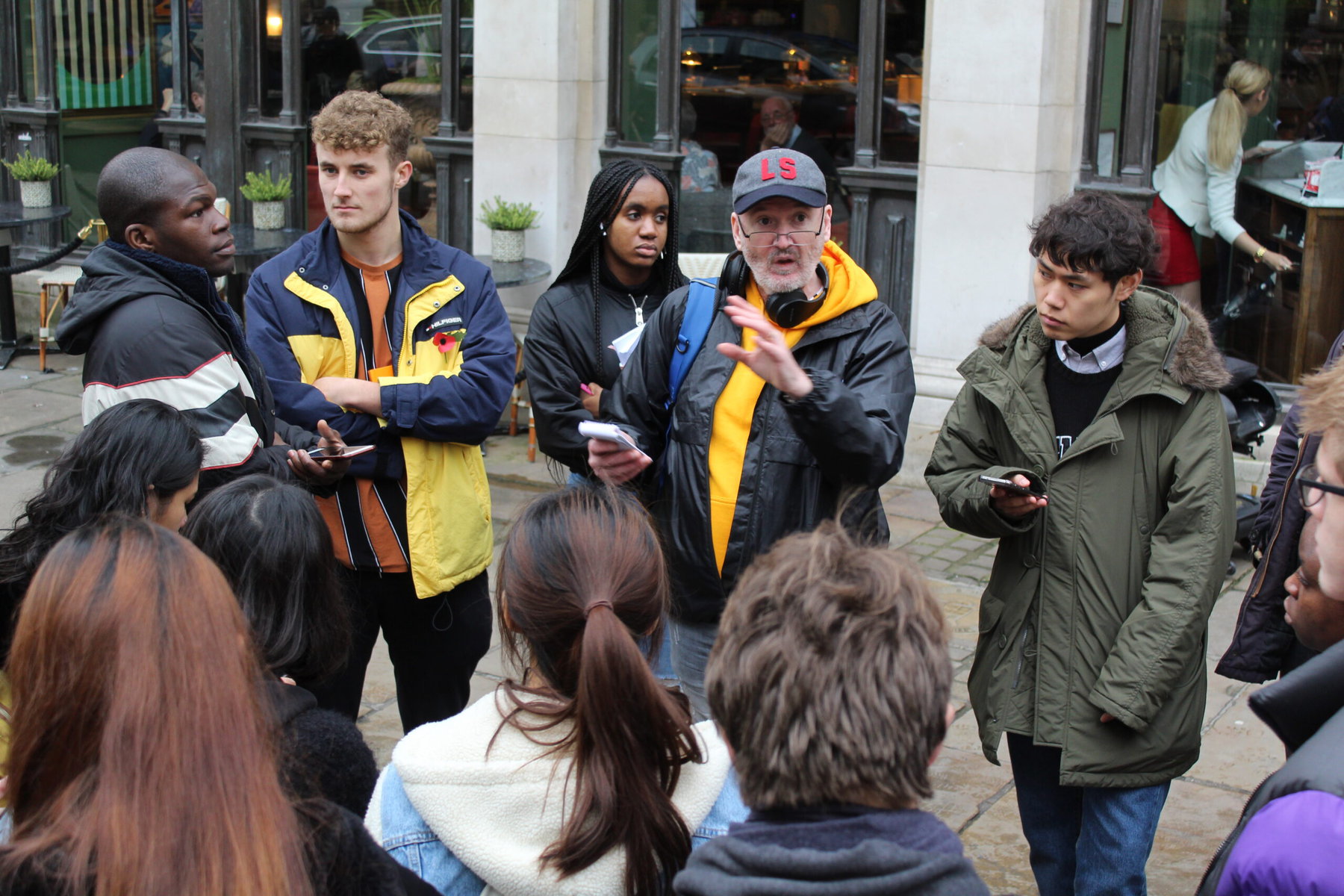 It took Miles six months to put together his tour of York. Courtesy of Invisible Cities
It took Miles six months to put together his tour of York. Courtesy of Invisible Cities
“I probably wouldn’t be where I am today without the opportunity Invisible Cities gave me. I’ll always be grateful for that.”
Invisible Cities’ guides specialize in unique topics that reflect their own personal story — such as a city’s LGBTQI history, notable women, protest culture, ties to witchcraft or how crime and punishment has evolved — in the UK cities of Edinburgh, York, Cardiff, Glasgow and Manchester.
Invisible Cities provides training for guides to create these “alternative walking tours,” as well as in public speaking and customer service skills. The organization is then responsible for marketing the tours and taking bookings. Participants pay up to £15 (around $19 US), which is split between the guide and Invisible Cities to support their efforts in recruiting more guides who have experienced homelessness.
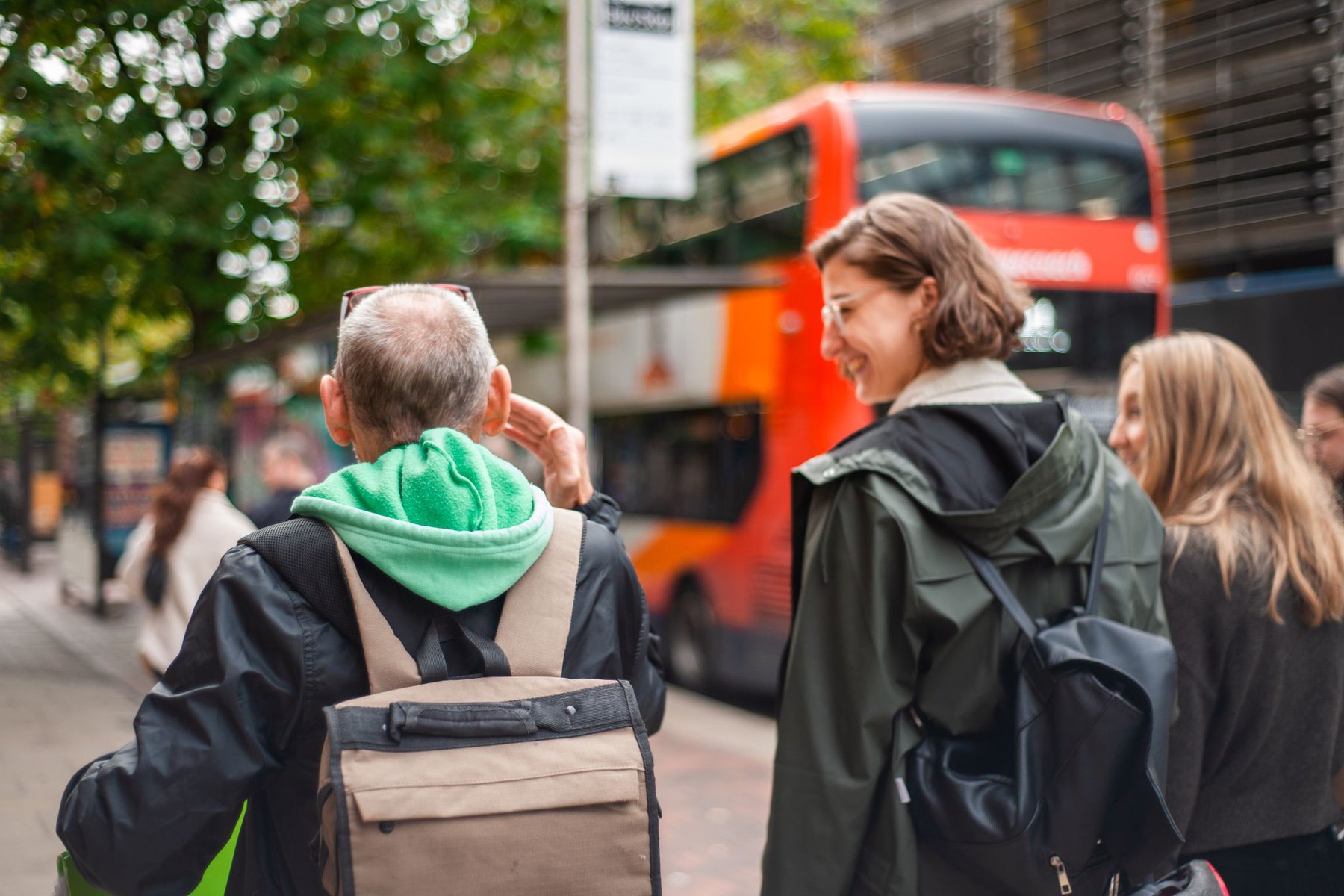 An Invisible Cities guide regales visitors on a tour in Manchester. Courtesy of Invisible Cities
An Invisible Cities guide regales visitors on a tour in Manchester. Courtesy of Invisible Cities
Invisible Cities has also set up a grant program for guides to access funding to do other external courses or start their own business, and offers training in IT and presentation skills to help them gain further employment.
With the help of sponsors, Invisible Cities also offers free community tours for specific groups. In 2023, 569 people from the Ukrainian community and from underprivileged areas attended free tours.
Miles’ tour of the English city of York, in which he has lived for the past 30 years, took him six months to put together. During that time, he transitioned out of the rehab center and into resettlement housing, where he stayed until he moved into his own apartment in 2021.
On his tours, Miles focuses on health and wealth in York, in parallel with his own experience in which his health was compromised due to addiction, and both having and losing wealth. He highlights buildings that have brought either health or wealth to the area, such as St. Leonard’s Hospital, which was one of the first hospitals in the UK, built in medieval times.
Courtesy of Invisible Cities
“This helped fill a void after I finished rehab. This was the opportunity that first helped me back on to a path of a ‘normal’ life again, and having a purpose.”
–Miles, Invisible Cities guide
He also spotlights the city’s chocolate making locations, from the Terry’s Chocolate factory, which manufactured the iconic “chocolate orange” that is a tradition to give and eat at Christmas in the UK, to the Rowntree’s site that created the popular Kit Kat chocolate bar.
“What Terry’s did is they brought employment into the city. But they recognised very early that in order to build their company, they had to provide housing for their staff, and they reinvested their original profits back into their workforce, and into building up the factory,” Miles explains.
Crushed by negative news?
Sign up for the Reasons to be Cheerful newsletter.
[contact-form-7]
“And the same with Rowntree’s, who provided health benefits and housing to their workforce. But Rowntree’s was then taken over by Nestle, a multinational conglomerate, whose profits and investment go out of the city.”
Miles’ tours have evolved over the past five years based on social developments in the city and the questions participants ask. For example, his tours have addressed issues such as gang-related drug dealing, and a lack of accessible parking in the city, and he also weaves in his own experience living with addiction.
 An Invisible Cities tour in York. Courtesy of Invisible Cities
An Invisible Cities tour in York. Courtesy of Invisible Cities
“I love being able to share the underbelly of our city, because York is very much seen as a vibrant city that’s rich with history and architecture. But I bring in aspects of rough sleeping, addiction and recovery, and I share what’s actually going on when [it’s] relevant, which keeps it alive for me, because it’s ever-changing,” he says.
Through other volunteering Miles has also built relationships with universities in the area, which have made his tour part of the curriculum for social policy students. He’s even had doctors come along who say they’ve gotten more out of it, in terms of understanding the city’s social support structure for homelessness and addiction, than a formal training day, so he is in talks with a number of local clinics to encourage more medical professionals to attend.
Founder Zakia Moulaoui Guery initially came up with the idea to help formerly homeless people gain the confidence to embrace the next chapter of their lives. To spread the concept of Invisible Cities further across the country, Moulaoui Guery has since developed a social franchise model, partnering with existing homeless organizations, which then take on the recruiting and training of guides.
This is crucial, says Moulaoui Guery, so the operation can continue to expand in a way that stays true to its mission of leveraging tourism to shine a light on issues of social justice and inequality, and help do good with the money visitors bring to iconic UK cities. Invisible Cities Cardiff, for example, is in partnership with The Wallach, the largest homelessness charity in Wales.
Courtesy of Invisible Cities
Invisible Cities guides are trained to give unique tours that weave together the city's history and their own personal story.
“Finding the right partner on the ground is always more important than whether or not that city will work in a touristic way,” says Moulaoui Guery. “I would rather work with a trusted partner, and for it to be a bit harder in terms of visitors, than to go somewhere like London, for example, which would be a lot harder to make work.”
In this way, expansion to Liverpool and the Scottish Borders is currently in the works. Moulaoui Guery is also eyeing cities like Oxford, Cambridge, Aberdeen and Dundee.
Not all who take on Invisible Cities’ training become guides — just 16 are currently actively running tours. About a quarter of a training cohort of around eight people become guides, shares Moulaoui Guery, while another quarter stay involved with Invisible Cities in a different capacity, for example, helping at tourism trade shows. Another quarter take up a different opportunity, through a job or setting up their own venture. And another quarter move on without staying in touch.
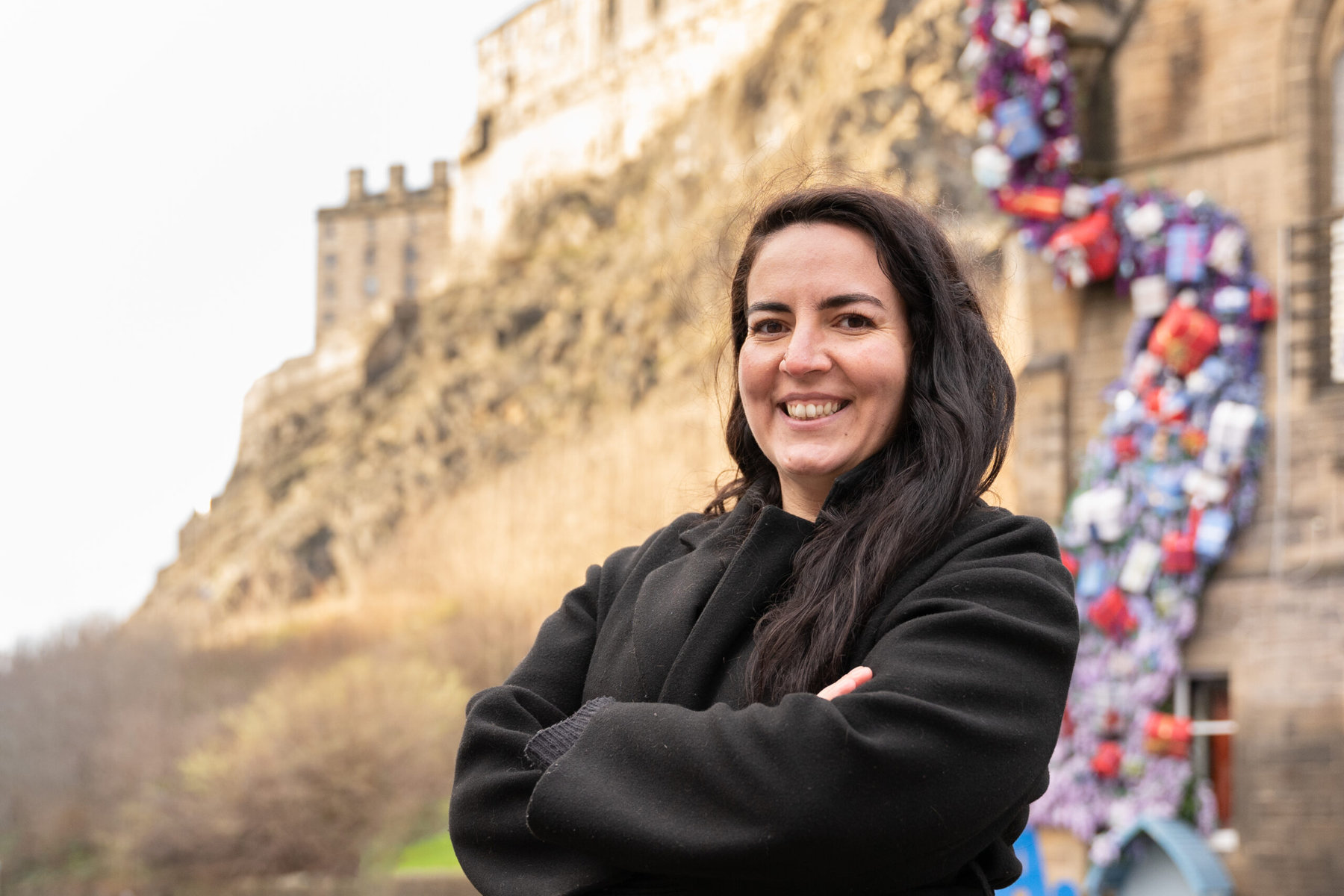 Zakia Moulaoui Guery, founder of Invisible Cities. Courtesy of Invisible Cities
Zakia Moulaoui Guery, founder of Invisible Cities. Courtesy of Invisible Cities
As much as she’s passionate about spreading the Invisible Cities movement, Moulaoui Guery is just as happy when guides move on.
“I think sometimes it’s great when we don’t hear anything from people, because it means they are moving on, and are too busy living out their dreams. What we don’t want to do is hold onto people forever,” she says.


Become a sustaining member today!
Join the Reasons to be Cheerful community by supporting our nonprofit publication and giving what you can.
Miles, meanwhile, is not only sober and in his own apartment, but has also helped set up another nonprofit organization to tackle homelessness and poverty. In light of his new commitments, he has gone from doing several Invisible Cities tours a week to a handful a month — but is keen to stay active as a guide even in this capacity.
“I don’t want to stop doing the tours,” he says. “They are really enjoyable. I will still keep this as a precious thing, because we are a close-knit team and really support each other. There’s quite a family feel.”
The post On ‘Alternative Walking Tours,’ Formerly Homeless People Share Their Perspectives appeared first on Reasons to be Cheerful.
Homelessness in Yellowknife
Here’s a ‘top 7’ summary of my recent book chapter on homelessness in Yellowknife:
Responding to homelessness in Yellowknife: Pushing the ocean back with a spoon
Homelessness in Yellowknife
Here’s a ‘top 7’ summary of my recent book chapter on homelessness in Yellowknife:
Responding to homelessness in Yellowknife: Pushing the ocean back with a spoon
Housing and homelessness study tour of London (UK)
Registration is now open for a housing and homelessness study tour of London (UK) that I’m helping to organize.
More information is available here: https://pheedloop.com/form/view/?id=FOR596K0XGYKSXE78
Housing and homelessness study tour of London (UK)
Registration is now open for a housing and homelessness study tour of London (UK) that I’m helping to organize.
More information is available here: https://pheedloop.com/form/view/?id=FOR596K0XGYKSXE78
Save the date: London (UK) in May 2024
I’m pleased to share a ‘save the date’ for study tour: London (UK) in May 2024.
Here’s the link: https://cihcanada.ca/calendar-by-month/calendar-by-list/
For this particular event, there will be two components: a housing tour for 2.5 days, and then a homelessness tour for 2.5 days. We expect some people will choose to register for both, while others will pick just one.
The registration fee for each component is expected to be CA$900 + applicable taxes.
Questions pertaining to registration and logistics should be directed to Mary Clarke: mclarke@chra-achru.ca
Questions pertaining to content should be directed to me at falvo.nicholas@gmail.com